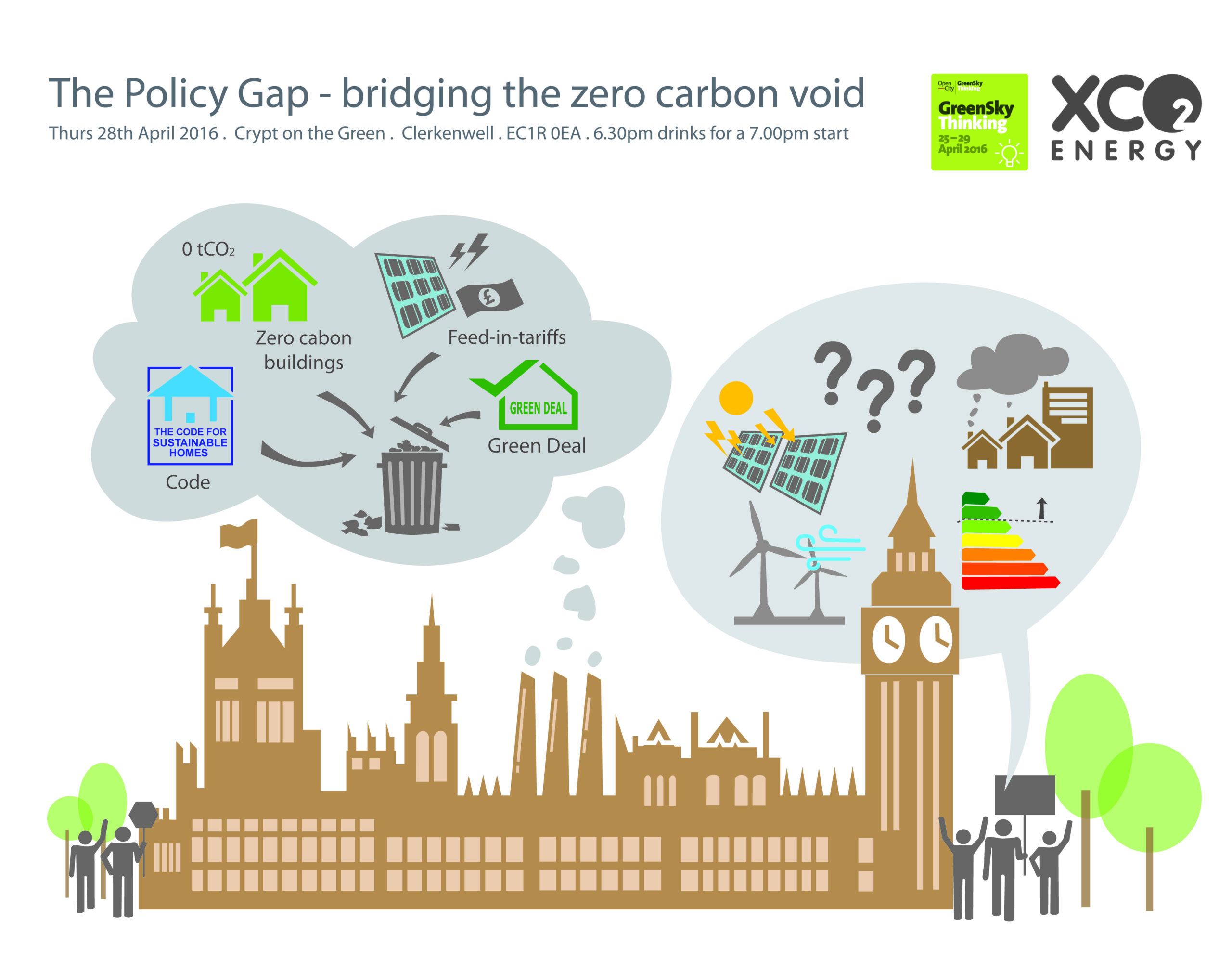Last week we witnessed a sad moment for carbon-concerned constructors.
The doors of the Zero Carbon Hub shut for the last time on the 31st March, leaving behind an empty hole in the industry for engaging, practical guidance into raising standards of energy efficiency in the buildings industry, particularly within the residential sector.
‘But why has this happened?’ you ask, ‘Zero Carbon Hub sounds great! Not only have they set unprecedentedly high standards of carbon reduction across the home-building sector, encouraged cross-industry collaboration, and published over one hundred useful resources for designers and contractors on their user-friendly website, but they’re also based in Farringdon, where all industry-leading, world-changing companies are!’
A valuable question, echoed by many in XCO2’s Farringdon office. Allow me a few minutes to set the scene.
The closure of the Zero Carbon Hub was practically endorsed by the Government with its scrapping of the national Zero Carbon Homes policy last July.
Although it was widely understood that the Zero Carbon Homes targets were far from perfect (they indirectly created issues with flawed design predictions, led to a mounting pressure on developers to bear the cost of expensive renewable technologies and overlooked all emissions from homeowners’ energy use) – their scrapping removed a key driver for improving performance across the industry.
The aforementioned scrapping, disguised in the detail of a government productivity report, caused some problems for the Hub. The Zero Carbon Hub did plod nobly on through this turbulent time, determinedly driving through valuable studies on overheating and the performance gap, but its inevitable end occurred in under a year. A not-for-profit organisation cannot survive without funding. The cut in Government support towards zero-carbon home building had the two-pronged effect, we suspect, of removing direct funding and also eroding industry confidence.
In recent weeks, we’ve also seen the release of the new Housing SPG – an addendum to the London Plan providing guidance to the domestic building industry on compliance with updated regional policy. The London Plan has long-promised a zero-carbon target for new domestic building projects in 2016. After all the fanfare, the results were decidedly underwhelming.
The SPG does require a 100% reduction in carbon emissions – but regulated emissions only. And given that 65% of this reduction can be made in bargain offset payments to the back pocket of the local borough this hardly seems to be a radical breakthrough in environmental policy.
The policy update is also only applicable to residential development (non-domestic target remains 35% in London for the foreseeable future). And most importantly, this zero-carbon breakthrough is London only – less than 0.007% of the area of the United Kingdom. Mind the Gap UK, 99.993% is lagging behind…
Let us not forget the frightfully ironic fact that just a few short months ago our Prime Minister delivered an impassioned, rousing speech about the perils of impending climate change. Cue budget cuts to renewable energy, slashing of subsidies and feed-in-tariff rates, the end of the Green Deal, and Government support for fracking and fossil fuels. Despite what was promised at the COP21 summit, it is clear that the green building industry cannot rely on Government policy in order to drive improvements in efficiency and carbon emissions.
So the big question is – what is the next step for the green building industry? Organisations such as UK-GBC have vowed to carry on the excellent work of the Zero Carbon Hub, and they can undoubtedly be supported by collaborative groups such as the Better Building Partnership and the Good Homes Alliance. Should the industry take the lead or is top-down the correct approach? How should we fill the policy and funding gap?
Join us, XCO2, at our Green Sky Thinking Event – ‘The Policy Gap – Bridging the Zero Carbon Void’ to discuss this further. Listen, learn and contribute at an informal debate with an expert panel of policy influencers (UKGBC, Better Building Partnership, Green Alliance) and building professionals (AHR Architects, BAM and XC02) on Thursday 28th April, 6.30pm – and yes, it’s in Farringdon. Book your spot here.
Next week’s blog: How to Fill the Policy Gap.


